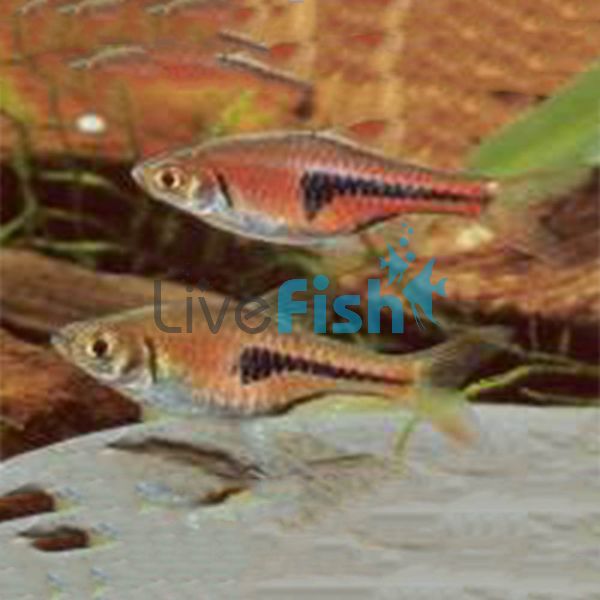Red Rasbora Hengeli 1cm
- Buy 5 for $3.72 each and save 10%
- Buy 10 for $3.30 each and save 20%
Red Rasbora Hengeli
The hengeli raspbora is a fantastic schooling species which makes for a great alternative to the incredibly common Harlequin Raspbora. Whilst both species are beautiful in their own regard, the hengeli end is slightly smaller with a lot more orange through the body. Regardless of looks this species offers everything that aquarists look for in a community species with its schooling behaviour, small size, and hardy nature. Often confused with a South American tetra the hengeli raspbora is in fact an Asian species but its care requirements closely resemble most tetra species.
These rasboras are most known for their beautiful array of contrasting colours, they have a light olive-green base colour which turns to a deep coppery orange colour through the body. These orange scales truly shimmer under aquarium lighting making them look like small neon lights as they tightly school in the tank. To contrast this they have a jet black triangle shape which starts from their ventral fin and finishes at the tail.
Hengeli raspbora only reach a maximum of 4.5 cm making them great additions for smaller aquariums and a great fish to add a lot of life to large community aquariums as these are an often overlooked schooling fish. Breeding the hengeli rasbora is possible however it is not a common practice as it is difficult to tell males from females and they also require specific environmental queues for breeding as well. The wild location of the hengeli rasbora is parts of Indonesia and Malaysia.
Tank Recommendations for your Hengeli Raspbora
Hengeli rasbora will be perfectly fine in aquariums as little as 50 litres. These fish are active and school really well, meaning a larger aquarium is always better, and keeping a school of 6 or more is a must. They also look amazing against plants and will thrive in well-planted aquarium along with other peaceful tank mates. Substrate is not a major concern for these fish as they are mostly mid-water fish however, they are a 'soft water' species meaning anything that could increase PH should be avoided. These are also tropical fish which are best kept at 24-26 degrees.
Suitable Tank Buddies
Due to their extremely peaceful behaviour hengeli rasbora are great to include in community aquariums. They can be kept with a wide range of tetras, gouram,i and other common smaller fish species.
Usually Compatible
Neon tetras, danios, bristlenose plecos, black widow tetras, and other smaller community fish.
Sometimes Compatible
Potentially aggressive or larger showing species such as severum or angelfish which may pester the rasbora.
Rarely Compatible
Aggressive species which may prey on the hengeli rasbora such as larger predator fish.
Feeding your Hengeli Raspbora
Hengeli rasbora are very easy to feed, they take to a wide range of aquarium foods such as flake, pellets, and frozen foods. Due to their small mouths, a small floating or slow sinking food is best with supplementation of frozen bloodworms or brine shrimp would be best.
| Scientific Name | Trigonostigma hengeli |
|---|---|
| Care Level | Easy |
| Common Names | Hengeli Rasbora, hengels Raspbora, dwarf hengeli raspbora |
| Diet | Carnivore |
| Fish Family | Cyprinidae |
| Lifespan (years) | 4 |
| Max. Length (cm) | 4 |
| Min. Tank Volume (l) | 10 |
| Origin | Indonesia & Malaysia |
| Sociability | Peaceful |
| Venomous | No |
| Water Conditions | 24-26° C, pH 6.0-7.0 |
| Plant Safe | Yes |




